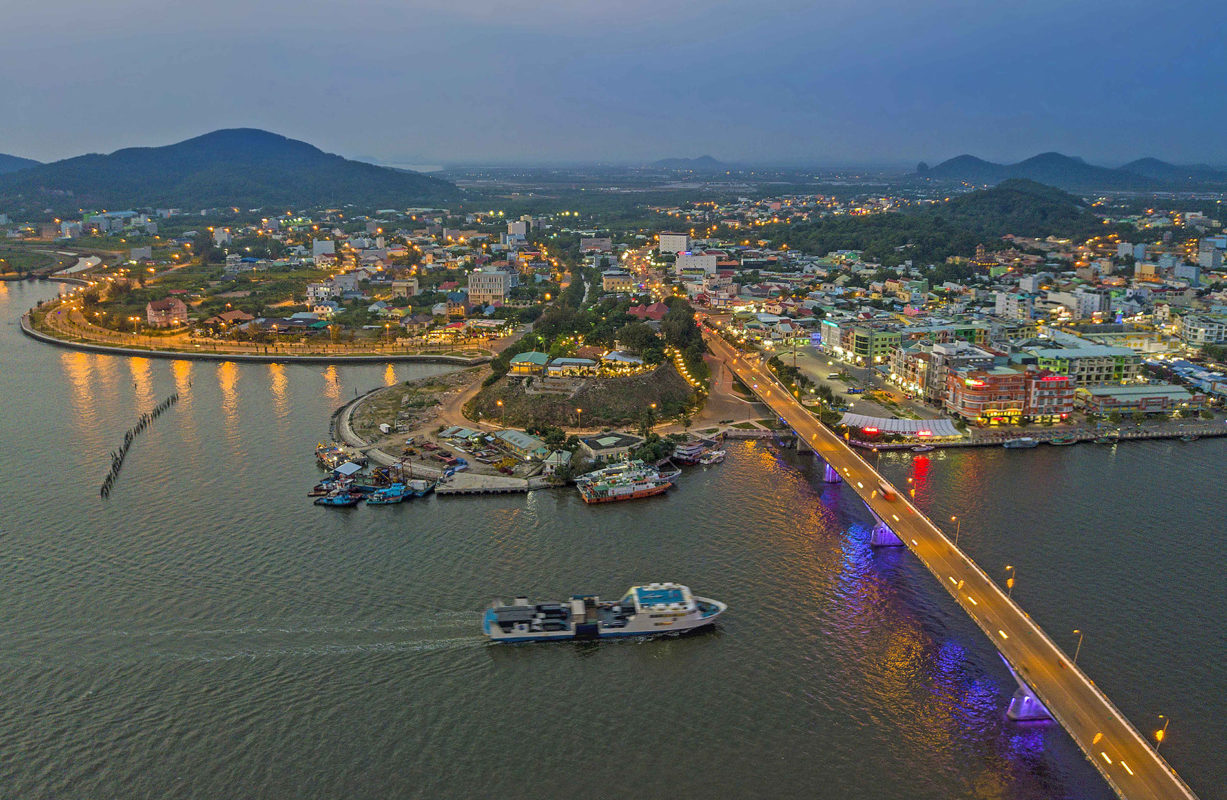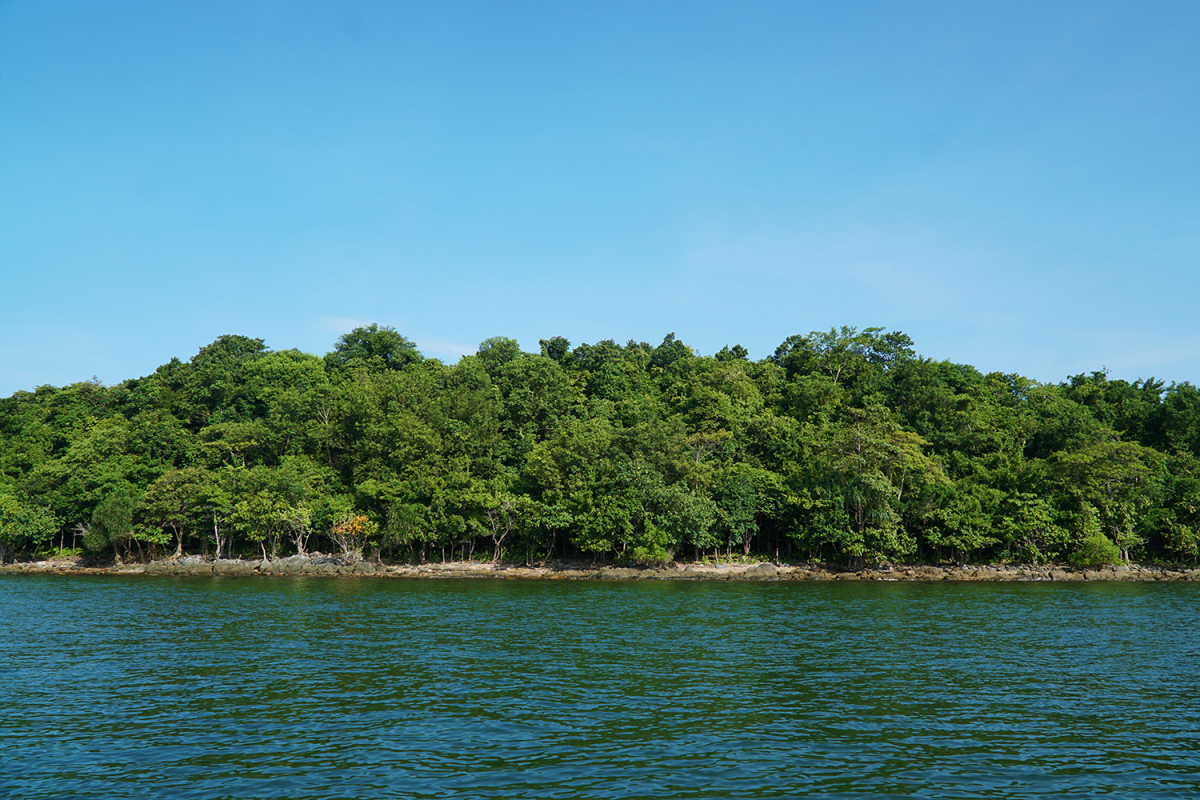Ha Tien: A Hidden Gem at the Crossroads of History and Nature
Last Updated on 1 January, 2025 by admin
Tucked away in the southwestern tip of Vietnam, Ha Tien is a charming town in Kien Giang Province that remains a well-kept secret among travellers. Known for its blend of rich history, breathtaking natural landscapes, and vibrant cultural diversity, Ha Tien offers a unique and tranquil escape from the bustling crowds of Vietnam’s more popular tourist destinations. Whether you’re a history buff, nature lover, or cultural enthusiast, Ha Tien’s understated beauty is sure to leave an indelible impression.

A Town with a Storied Past
Ha Tien’s history dates back to the late 17th century when it was founded by Mac Cuu, a Chinese immigrant who transformed the area into a thriving trade hub. Under his leadership, Ha Tien played a crucial role in Vietnam’s expansion to the south, leaving behind a legacy that continues to resonate in its historical landmarks.
Mac Cuu Tomb and Temple: This sacred site honours the town’s founder and his family. Walking through the tranquil grounds, I felt a deep sense of reverence for the legacy of this pioneering figure who shaped Ha Tien’s identity.
Thach Dong Cave Temple: Perched amidst limestone cliffs, this mystical temple is steeped in local legends and offers sweeping views of the surrounding countryside. The serene atmosphere inside the cave left me mesmerised.
Da Dung Mountain: Once a strategic military base, this rugged mountain is now a haven for hikers and history enthusiasts, with remnants of its storied past still visible.
The Natural Beauty of Ha Tien
Ha Tien is a haven of stunning natural landscapes, where coastal charm, inland serenity, and ecological diversity blend seamlessly to create a breathtaking tapestry of beauty.

Mui Nai Beach: A Coastal Retreat
The tranquil Mui Nai Beach offers the perfect escape for those seeking relaxation. My time here was spent basking under the warm sun, with the sound of gentle waves creating a soothing backdrop. I walked along the golden sands, occasionally dipping my toes into the cool, inviting waters. The beach was quiet, with only a handful of families and fishermen dotting the shore. As the afternoon progressed, I treated myself to fresh coconut water from a nearby vendor and watched as the sky painted itself in hues of pink and orange during sunset. It was a moment of pure serenity that I’ll always treasure.
Ha Tien Archipelago: A Paradise for Adventurers
Exploring the Ha Tien Archipelago was nothing short of magical. This cluster of untouched islands felt like a secret paradise waiting to be discovered. I joined a boat tour that took me to several islands, each with its unique character. The crystal-clear waters were perfect for swimming, and I even snorkelled near one of the reefs, marvelling at the vibrant marine life below. At one stop, I hiked up a small hill to enjoy panoramic views of the turquoise sea stretching endlessly into the horizon. The simplicity and raw beauty of these islands made me feel connected to nature in a way I hadn’t experienced before.
Dong Ho Lagoon: A Serene Masterpiece
Dong Ho Lagoon is a place of unparalleled tranquillity. Arriving just before sunset, I was greeted by a serene scene of still waters reflecting the golden light of the setting sun. I found a quiet spot along the shore, where I could sit and watch flocks of birds gracefully return to their nests amidst the mangroves. The gentle rustling of leaves and the occasional splash of water created a meditative atmosphere. As the day transitioned into evening, the lagoon seemed to come alive with the soft hum of nature, offering a moment of peace that was both humbling and uplifting.
Chua Hang Cave: A Limestone Marvel
Nestled within Ha Tien’s rugged terrain, Chua Hang Cave is a natural wonder that left me in awe. The cool air inside the limestone cave provided a refreshing respite from the tropical heat. I wandered through its winding pathways, marvelling at the intricate stalactites that adorned the ceiling like frozen waterfalls. Sunlight filtered through narrow openings, casting ethereal beams onto the cavern walls. Guided by a local, I learned about the cave’s historical and spiritual significance, adding depth to its natural allure. Standing in the heart of Chua Hang Cave, I felt a profound connection to the timeless beauty of the earth.
Ha Tien’s natural landscapes offer a sanctuary for both the adventurous and the contemplative soul. From the relaxing shores of Mui Nai Beach to the untouched beauty of its archipelago, the meditative stillness of Dong Ho Lagoon, and the mystical charm of Chua Hang Cave, every corner of Ha Tien invites exploration and reflection. My journey through these landscapes wasn’t just a feast for the eyes but a rejuvenation of the spirit—a reminder of the simple yet profound beauty that nature offers.
A Cultural Tapestry
Ha Tien is a vibrant mosaic of Vietnamese, Khmer, and Chinese cultures, creating a rich and diverse community.
- Festivals: The annual Ha Tien Culture and Tourism Festival showcases traditional music, dance, and local crafts, while the Chol Chnam Thmay (Khmer New Year) celebration brings colourful rituals and festivities to the streets. Participating in these events offered me an authentic glimpse into the heart of Ha Tien’s cultural life.
- Culinary Highlights: Ha Tien’s cuisine is a treat for the senses. From Ha Tien rice noodles to the hearty banh canh cha ca (fish cake soup), every bite told a story of local flavours and traditions. Sampling fresh seafood at a waterfront restaurant remains one of my fondest memories.
Activities and Experiences in Ha Tien
Ha Tien is a treasure trove of activities and experiences, offering a delightful mix of adventure, cultural immersion, and relaxation to suit every traveller’s preferences.
Outdoor Adventures
For thrill-seekers and nature lovers, Ha Tien’s outdoor offerings are second to none. Hiking up Da Dung Mountain was an invigorating challenge. As I climbed, the trail revealed stunning vistas at every turn. The peak rewarded me with panoramic views of lush greenery and the distant coastline—a sight so breathtaking that I forgot the effort it took to get there. Another highlight was island-hopping in the Ha Tien Archipelago. Each island felt like its own little paradise, with pristine beaches, crystal-clear waters, and a sense of untouched beauty. I snorkelled in one of the coral reefs and marvelled at the vibrant underwater life—a magical experience that remains etched in my memory.
Cultural Immersion
Ha Tien’s local markets are a window into the region’s vibrant culture. Wandering through the bustling aisles, I was greeted by a sensory feast: the dazzling array of fresh fruits and vegetables, the enticing aroma of sizzling street food, and the lively banter of vendors bartering with customers. I tried a steaming bowl of banh canh cha ca (fish cake soup) at one of the stalls, and it was a revelation of flavours—simple yet deeply satisfying. Striking up conversations with locals gave me insights into their daily lives and traditions. One vendor proudly shared the story behind her handmade baskets, which I gladly purchased as a meaningful souvenir.
Relaxation and Wellness
After days of exploration, Ha Tien’s tranquil environment provided the perfect setting to unwind. I treated myself to a traditional Vietnamese massage at a cosy local spa. The skilled therapist used gentle, rhythmic techniques that melted away the fatigue of hiking and island-hopping. The soothing herbal oils added an aromatic touch, leaving me completely rejuvenated. Later, I found a quiet spot by the lagoon to meditate, letting the serene surroundings and soft sounds of nature calm my mind. These moments of relaxation made me appreciate the restorative power of Ha Tien’s natural and cultural harmony.
Ha Tien’s diverse activities ensured that every day was a new adventure, filled with discovery and connection. Whether hiking rugged trails, engaging with the vibrant local culture, or simply relaxing in its serene landscapes, each experience offered something special. My time in Ha Tien was not just a journey through a beautiful destination but a journey into the heart of what makes travel so enriching.
Practical Tips for Visiting Ha Tien
To make the most of your trip to Ha Tien, consider these practical tips:
- Best Time to Visit: The dry season from November to April offers pleasant weather for outdoor activities.
- Getting There: Ha Tien is accessible by road from Ho Chi Minh City, Rach Gia, or Phnom Penh (Cambodia). Ferries are also available to nearby islands.
- Accommodation Options: From cosy homestays to comfortable resorts, there’s a wide range of lodging to suit every budget.
- What to Bring: Pack light but include essentials like sun protection, insect repellent, and comfortable walking shoes to enjoy Ha Tien’s diverse activities fully.
Why Ha Tien is a Must-Visit Destination
Ha Tien is more than just a destination—it’s an experience that combines history, nature, and culture in a way few places can. Its peaceful atmosphere, coupled with its rich heritage and stunning landscapes, makes it an ideal getaway for those seeking something off the beaten path.
For me, Ha Tien was a revelation. It offered moments of reflection by the lagoon, the thrill of discovering hidden caves, and the joy of connecting with a community that cherishes its traditions. If you’re looking for a place where history meets nature, and tranquillity meets adventure, Ha Tien is a hidden gem waiting to be explored.

